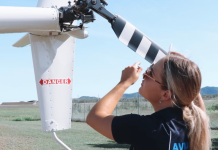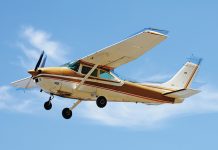A 12-factor classification of maintenance hazards remains as relevant as it was in 1993.
Gordon Dupont’s aviation career began in the mountain passes of Papua New Guinea (PNG). But its high point took place in a government office containing a large cardboard box. When he opened it, he advanced aviation safety.
Dupont brought a distinctive combination of experience to that government office, beginning as a missionary pilot in PNG. ‘The maps we used were from the war and marked “not for navigation”,’ he recalls. On leave he would fly to Australia, as far south as Bankstown, and he remembers being both irritated and impressed by the precision and zeal of Australian ATC.
Returning to Canada in the late 1960s, he faced the decision that every professional pilot eventually confronts. ‘I didn’t want to become an airline pilot because I wanted to come home at night,’ he says, from Richmond, British Columbia, where he still consults on aviation safety.
Incidents and accidents were not the result of random carelessness, stupidity or laziness, but emerged from a complex interaction between personal qualities, personal limitations and organisational characteristics.
He became an engineer, then principal of an aviation maintenance training college, then served 7 years as a Transportation Safety Board accident investigator. In 1993, Transport Canada hired him as a maintenance safety expert in the wake of the 1989 Dryden, Ontario, airline crash, which had led to a wide-ranging judicial inquiry.
‘I was called special safety program coordinator which was a fancy title for, “We don’t know what to call you”,’ he says. ‘I was trying to develop proactive training to lower the accident rate. Working as an investigator had been reactive – we couldn’t say anything until after an accident.’
Insight came in an unlikely package – the cardboard box mentioned above. It arrived full of maintenance incident reports from the Canadian Forces. ‘They were the only ones who kept that sort of information,’ Dupont says. ‘I pulled the ones that said, “careless, stupid or lazy” out of the box and I went through them a second time.’
After many cycles of sorting, and a colossal mess of old-style folding computer paper on the office floor, themes began to emerge. Incidents and accidents were not the result of random carelessness, stupidity or laziness, but emerged from a complex interaction between personal qualities, personal limitations and organisational characteristics.
This had been proposed before, notably by James Reason’s Swiss cheese model. Dupont’s contribution, which he called ‘The dirty dozen’, was to identify manageable distinct safety problems that could be addressed, breaking this huge vague challenge into 12 smaller ones. The concept has since been applied in maintenance, flight operations and health care.
Why 12? ‘It’s an easy number to remember, a snappy title and it fitted into the data,’ Dupont says. ‘Some people have said I should have a baker’s dozen [13] or a top 10, [the filthy 15 is another classification doing the rounds of some training programs] but I said a dozen would take care of 99.9% of incidents.’
The dirty dozen
The 12 elements can be thought of as a matrix; they reinforce and overlap each other. ‘Don’t think there’s just one – the dirty dozen like to get together and gang up on you,’ Dupont says. Conversely, well managed elements can mitigate the dangerous effects of the others.
Originally there was no hierarchy but Dupont now considers fatigue to be the most acutely dangerous hazard. The dirty dozen are:
- lack of communication
- distraction
- lack of resources
- stress
- complacency
- lack of teamwork
- pressure
- lack of awareness
- lack of knowledge
- fatigue
- lack of assertiveness
- norms.
1. Lack of communication
Communication has many enemies in the hangar: ambient noise, obscure jargon, unstated assumptions, time pressure, particularly at shift handover, and imprecise language. ‘If generator has not been expended, install shipping cap on firing pin,’ was an instruction to maintenance workers at SabreTech engineering, Miami, US, in May 1996. As William Langewiesche wrote in The Atlantic, this required hard-pressed maintenance workers to distinguish between an expended oxygen generator, which could not start a fire, and an expired one, which could. The SabreTech workers solved the dilemma by loosely packing all oxygen generators into a cardboard box and putting it on Valujet flight 592, which caught fire and crashed, killing all 110 on board.
Mitigators for lack of communication include:
- writing down complex instructions
- using logbooks, worksheets, and checklists
- keeping verbal messages short and simple
- emphasising critical elements at the beginning of a message and repeating them at the end
- confirming understanding and encouraging questions.
The dirty dozen like to get together and gang up on you.
2. Distraction
Neuroscience has advanced since 1993 and theories of memory are more refined but the link between distractions, interruptions and disastrous lapses of memory remains. ‘The brain works faster than the hands,’ Dupont says. ‘If distracted, you will come back thinking that you are further ahead then you are unless something visual brings you to reality.’
Mitigators for distraction include:
- prioritising the task and completing it before responding
- making incomplete work obvious as a reminder to you or whoever completes the work
- when returning to a task, starting again at least 3 steps from where you finished, to ensure there are no gaps in the task
- having someone else double-check the task
- using a checklist.
3. Lack of resources
Resources for a task include parts, personnel, time, data, tools, skill, experience and knowledge. Lighting for work stands, and hangar temperature also fall under this category: having to stretch or bend uncomfortably to perform a task increases the chances of error.
Mitigators for lack of resources are:
- assessment, planning and investment
- working out what is needed and not scrimping.
4. Stress
Maintenance engineers are people, with full and sometimes complex lives. The stress of these can sometimes impact their work if not managed. Organisations are also impacted by stress, as many were during the COVID-19 pandemic.
Mitigators for stress in individuals include:
- rest, balanced diet and exercise
- speaking out and getting help if stressed
- watch for signs of stress in colleagues.
5. Complacency
While too much pressure and demand causes over-stress and reduced human performance, too little results in, boredom, complacency and reduced human performance. The Oxford English Dictionary defines complacency as, ‘A feeling of being satisfied with yourself or with a situation, so that you do not think any change is necessary.’ Complacency is linked to reduced vigilance – ‘Don’t worry, it’s OK!’ – and susceptibility to confirmation bias, seeing only what you expect to see.
Mitigators for complacency include:
- following standard procedures and checklists every time
- checking your work every time, even if the operation is easy
- always being prepared to find something wrong
- never signing off on anything you haven’t fully checked.
6. Lack of teamwork
Aviation maintenance, particularly of heavy aircraft, is a ‘team sport’. No one engineer knows everything or can do everything. As sport shows us, great teams have intangible qualities that elevate their performance. They excel in leadership, communication and motivation.
There are many ways to build a team. Some maintenance-specific ones include:
- briefing tasks that require several people to ensure nothing is forgotten
- selecting team members with a broad range of skills and experience
- practice and rehearsal
- dividing tasks appropriately among different team members
- having clearly defined roles and responsibilities
- debriefing.
We put pressure on ourselves by taking on more work than we can handle, especially other people’s problems, by trying to save face, and by positively promoting superpowers that we do not possess.
7. Pressure
Some degree of pressure is inevitable in aviation maintenance. Very expensive machines are expected to be maintained, repaired and overhauled to tight schedules. Pressure can come from clients, management or ourselves. Skybrary says, ‘We put pressure on ourselves by taking on more work than we can handle, especially other people’s problems, by trying to save face, and by positively promoting superpowers that we do not possess.’
Mitigators for pressure in individuals include:
- speaking up if a task needs more time
- asking for extra support if you don’t have enough time.
8. Lack of awareness
This refers to not recognising a situation, and not predicting the possible results. It is analogous to tunnel vision in pilots that comes with task saturation, and is related to stress, pressure and fatigue.
Mitigators to increase awareness include:
- fully understanding the procedures and possible consequences of a task
- asking ‘what if?’
9. Lack of knowledge
There’s a lot to know. Aircraft and their many systems are complex and require volumes of technical documentation. Added to this are airworthiness directives, airworthiness bulletins and service letters. On the job experience is no substitute for technical training, and after you think you’ve learnt everything, technological change means your knowledge can go out of date.
Mitigators for lack of knowledge include:
- accepting you don’t know it all – no-one does
- seeking and using relevant up-to-date documentation
- RTGDM – read the goddamn manual.
‘One of my ex-World War II instructors made us recite that [RTGDM] at the start and end of every class; that may not be politically correct in this day and age but 50 plus years later, I still remember it,’ Dupont says.
Speaking up to highlight problems is essential but difficult.
10. Fatigue
Prolonged stress or lack of sleep will lead to fatigue. Under its influence, concentration and memory fade. Distraction and low mood become more likely.
Mitigators against fatigue include:
- rest
- balanced diet
- not scheduling safety critical tasks in the window of circadian low, between 3 am and 5 am.
11. Lack of assertiveness
Speaking up to highlight problems is essential but difficult. But it is a skill and it can be learnt. Speaking assertively is different from being aggressive. It involves respecting the opinions of others, but not compromising your standards.
Assertiveness can be facilitated by:
- emphasising what is right, not who is right.
12. Norms
‘The way we do things round here’ – also known as safety culture – are the expected, yet unwritten, rules of behaviour in an organisation. Leadership, or its absence, sets these norms. Unexamined or ill-disciplined norms can lead to normalisation of deviance when an organisation drifts into unsafe practices. People rationalise this because, despite departing from stringent best practice, nothing bad has happened – yet.
Mitigations against bad norms include:
- developing assertiveness
- setting a personal example of best practice.

Subscribe
Subscribe to Maintenance matters, our monthly newsletter to keep you up-to-date with the rules and safety topics for the maintenance sector.






Comments are closed.